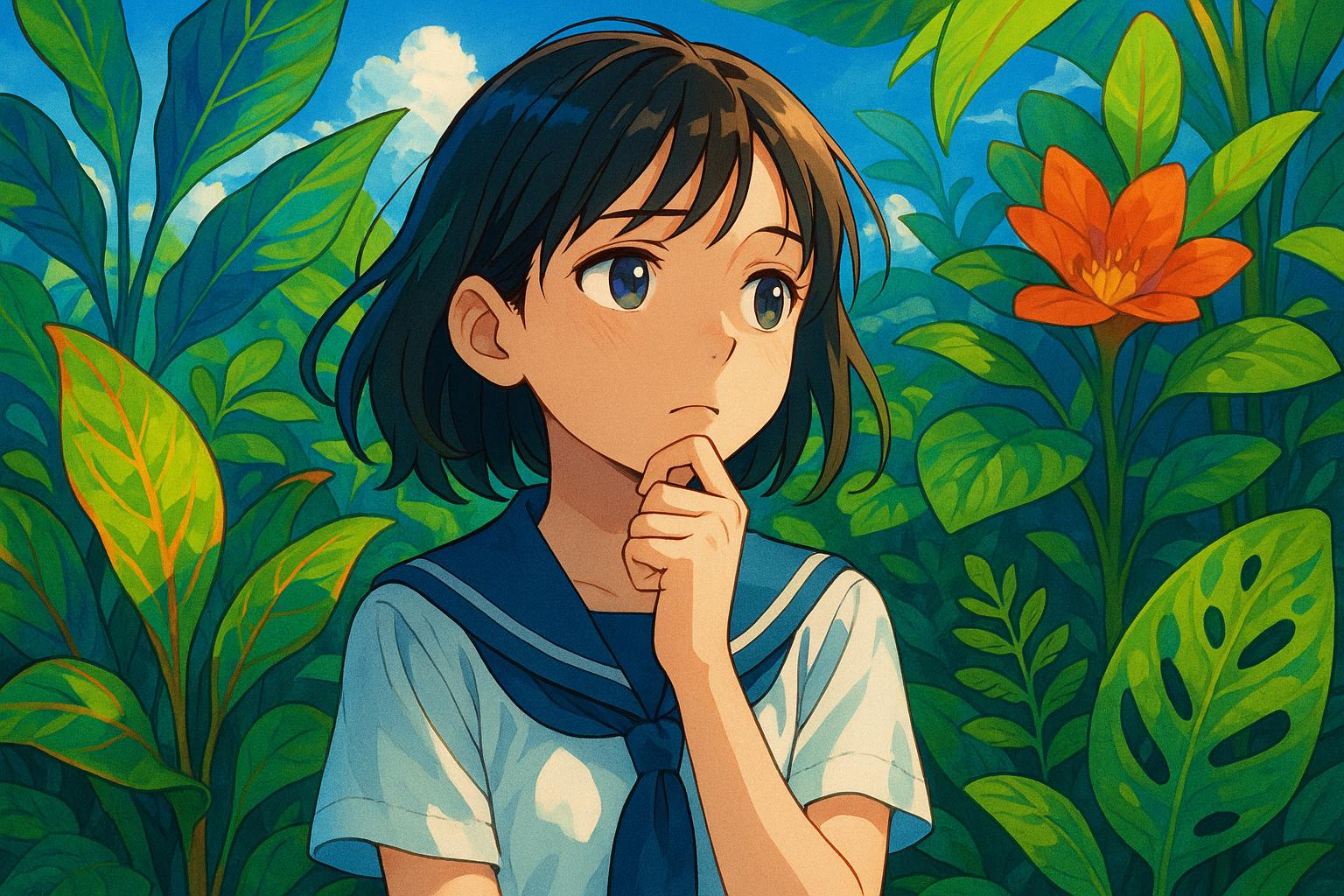On show until August 31 at The Cornerstone Arts Centre in Didcot, Naomi Farmer’s More Than Plants exhibition confronts the overlooked role of plants in ecosystems and human survival, urging visitors to rethink their perception and promote plant conservation amid growing ecological crises.
Naomi Farmer’s exhibition, “More Than Plants,” currently showcased at The Cornerstone Arts Centre in Didcot, invites audiences to reconsider their relationship with the green life around them, as it aims to uncover the often-overlooked importance of plants in our daily existence. On display until August 31, the exhibition tackles the phenomenon known as “plant blindness,” a term which refers to the general tendency of people to disregard plants in their environments. Through this innovative exploration, Farmers challenges visitors to engage more consciously with the ecology that sustains them.
The Australian-trained visual communicator draws upon a rich tapestry of ecological research, vision theory, and her extensive background in the agriculture and horticulture sectors to weave a narrative that encourages deeper appreciation for plant life. As she poignantly describes, “We rely on plants for everything—food, air, medicine, clothing, shelter—yet we rarely give them a second thought.” This narrative dimension is crucial, for it encapsulates not only the utilitarian benefits of plants but also the psychological biases that lead to their neglect in both education and conservation efforts.
The exhibition serves as a reflection on a broader conservation issue. Research from the Royal Botanic Gardens, Kew, highlights the imbalance in funding and attention allocated to plant versus animal conservation, underscoring the fact that many endangered species are plants, yet they remain in the shadows of public interest and funding. Such neglect poses a risk not just to the plants themselves, but to the entire ecosystems that depend on them. This situation makes Farmer’s efforts all the more pressing, as she aims to ignite awareness that our survival is intricately linked to these living organisms.
In her artwork, Farmer employs a mix of design, illustration, and narrative techniques to effectively highlight this connection. She implores visitors to rethink how they perceive plants—not solely as decorative elements or functional resources, but as integral participants in complex ecosystems. “Whether it’s a tree cut down for housing or an illegal plant trade destroying ecosystems, the consequences are real,” she notes. Her work tacitly argues that de-emphasising the role of plants threatens not only biodiversity but ultimately our own existence as well.
Additionally, the exhibition encourages attendees to contemplate how their own visual perceptions shape their experiences and interactions with nature. This introspective journey is not just about acknowledging the beauty of plants, but rather understanding their critical roles in sustaining life. As Farmer aptly sums it up, “We need to start seeing plants not as background, but as the stage on which all life depends.” Through dialogues such as these, “More Than Plants” stands as a timely and necessary intervention in a world where ecological awareness is paramount.
The impact of Farmer’s exhibition extends beyond visual appreciation; it functions as a call to action. By recognising the vital roles plants play, visitors may be inspired to advocate for their preservation and to reflect on their personal contributions to sustainability. Ultimately, “More Than Plants” seeks to foster a deeper connection with the natural world, urging us all to pay closer attention to the flora that quietly supports our existence.
Reference Map:
- Paragraph 1 – [1], [3]
- Paragraph 2 – [1], [2]
- Paragraph 3 – [1], [2]
- Paragraph 4 – [1]
- Paragraph 5 – [1], [6]
Source: Noah Wire Services
- https://www.oxfordmail.co.uk/news/25178732.didcot-exhibition-exploring-over-looked-world-plants/?ref=rss – Please view link – unable to able to access data
- https://www.kew.org/read-and-watch/plant-blindness-conservation-implications – This article from the Royal Botanic Gardens, Kew, discusses the concept of ‘plant blindness,’ a term describing the tendency to overlook plants in our environment. It highlights the implications for conservation, noting that while plants constitute a significant portion of endangered species, they receive disproportionately less attention and funding compared to animals. The article emphasizes the need for increased recognition and appreciation of plants to support effective conservation efforts.
- https://www.oxfordmail.co.uk/news/25178732.didcot-exhibition-exploring-over-looked-world-plants/?ref=rss – The Oxford Mail reports on the ‘More Than Plants’ exhibition by Naomi Farmer at The Cornerstone Arts Centre in Didcot. The exhibition aims to challenge ‘plant blindness’ by encouraging visitors to recognize the essential role of plants in life on Earth. Through design, illustration, and narrative, it invites attendees to reframe their perception of plants as vital participants in complex ecosystems, rather than mere background elements.
- https://www.oxfordmail.co.uk/news/25178732.didcot-exhibition-exploring-over-looked-world-plants/?ref=rss – The Oxford Mail reports on the ‘More Than Plants’ exhibition by Naomi Farmer at The Cornerstone Arts Centre in Didcot. The exhibition aims to challenge ‘plant blindness’ by encouraging visitors to recognize the essential role of plants in life on Earth. Through design, illustration, and narrative, it invites attendees to reframe their perception of plants as vital participants in complex ecosystems, rather than mere background elements.
- https://www.oxfordmail.co.uk/news/25178732.didcot-exhibition-exploring-over-looked-world-plants/?ref=rss – The Oxford Mail reports on the ‘More Than Plants’ exhibition by Naomi Farmer at The Cornerstone Arts Centre in Didcot. The exhibition aims to challenge ‘plant blindness’ by encouraging visitors to recognize the essential role of plants in life on Earth. Through design, illustration, and narrative, it invites attendees to reframe their perception of plants as vital participants in complex ecosystems, rather than mere background elements.
- https://www.oxfordmail.co.uk/news/25178732.didcot-exhibition-exploring-over-looked-world-plants/?ref=rss – The Oxford Mail reports on the ‘More Than Plants’ exhibition by Naomi Farmer at The Cornerstone Arts Centre in Didcot. The exhibition aims to challenge ‘plant blindness’ by encouraging visitors to recognize the essential role of plants in life on Earth. Through design, illustration, and narrative, it invites attendees to reframe their perception of plants as vital participants in complex ecosystems, rather than mere background elements.
- https://www.oxfordmail.co.uk/news/25178732.didcot-exhibition-exploring-over-looked-world-plants/?ref=rss – The Oxford Mail reports on the ‘More Than Plants’ exhibition by Naomi Farmer at The Cornerstone Arts Centre in Didcot. The exhibition aims to challenge ‘plant blindness’ by encouraging visitors to recognize the essential role of plants in life on Earth. Through design, illustration, and narrative, it invites attendees to reframe their perception of plants as vital participants in complex ecosystems, rather than mere background elements.













